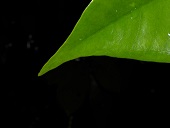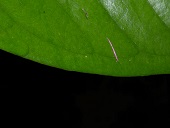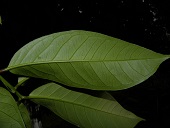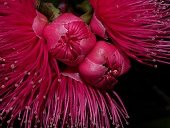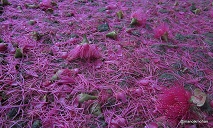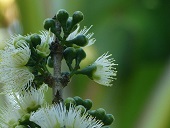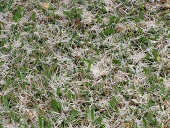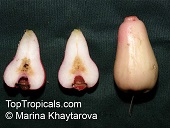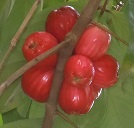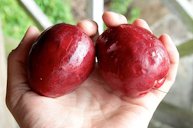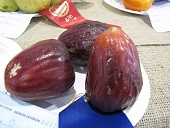| Malay Apple - Syzygium malaccense | |||||||||||||||||||||||||||||||||||||
|---|---|---|---|---|---|---|---|---|---|---|---|---|---|---|---|---|---|---|---|---|---|---|---|---|---|---|---|---|---|---|---|---|---|---|---|---|---|
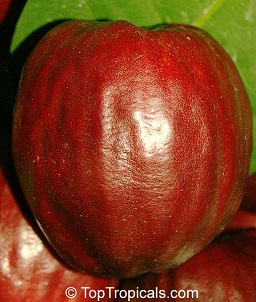 Fig. 1 Syzygium malaccense, Malay apple var. 'Pumarosa' 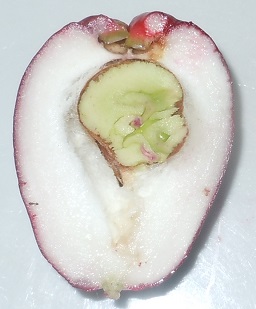 Fig. 2  A ripened S. malaccense cut into half, showing the seed 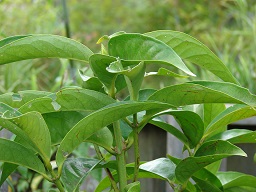 Fig. 3  S. malaccense (mountain apple), leaves, Kula Ace Hardware and Nursery, Maui, Hawai'i  Fig. 4  S. malaccense leaves, Pali o Waipio, Maui, Hawai'i  Fig. 5 S. malaccense, Costa Rica 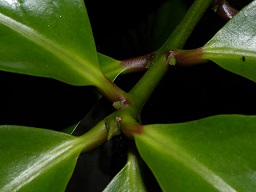 Fig. 6  Fig. 13  S. malaccense flower buds at Nahiku, Maui, Hawai'i  Fig. 14  Fig. 15  S. malaccense, Costa Rica 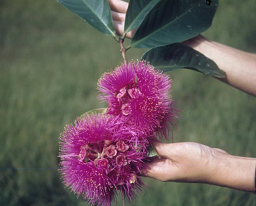 Fig. 16 S. malaccense 'Soledad', California 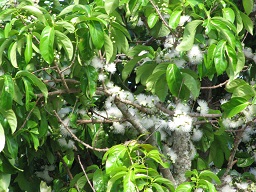 Fig. 17  S. malaccense white flowers, Haiku, Maui, Hawai'i 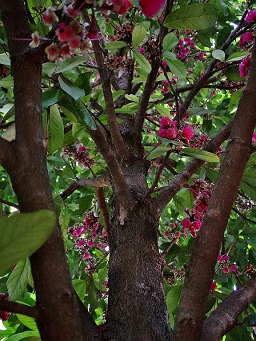 Fig. 18  S. malaccense 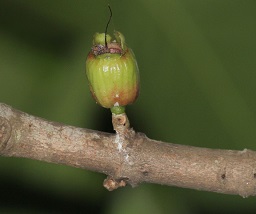 Fig. 25  S. malaccense 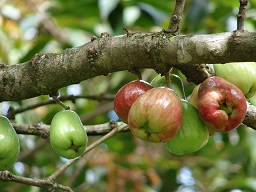 Fig. 26  S. malaccense fruit, Hana Hwy, Maui, Hawai'i 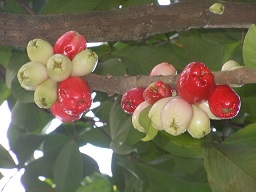 Fig. 27  The fruits in full season in Trinidad and Tobago 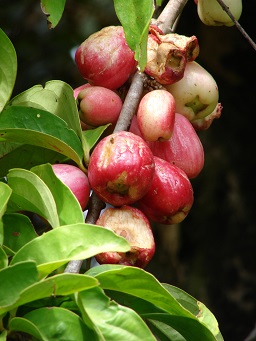 Fig. 28  S. malaccense fruit and leaves, Hana Hwy, Maui, Hawai'i 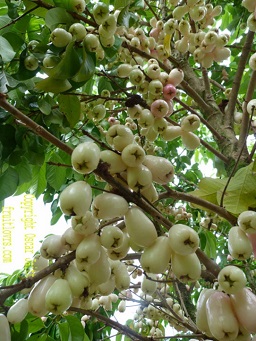 Fig. 29  S. malaccense, white Malay apple 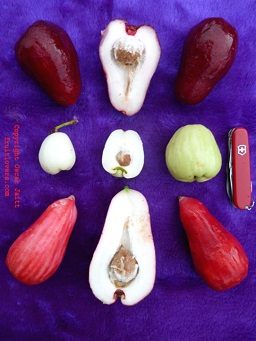 Fig. 30  Three types of Malay apples 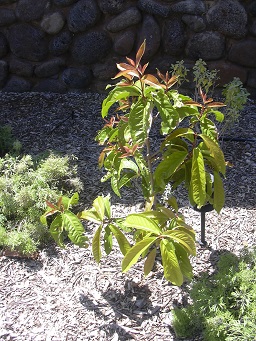 Fig. 37  S. malaccense habit, Maui Nui Botanical Garden, Maui, Hawaii' 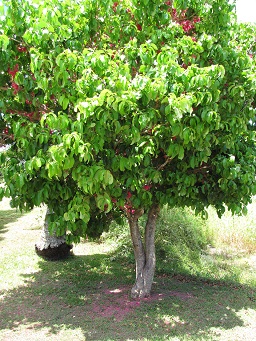 Fig. 38  S. malaccense flowering habit, Haiku, Maui, Hawai'i 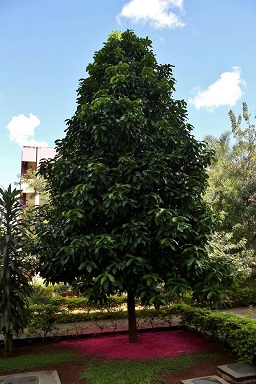 Fig. 39  S. malaccense 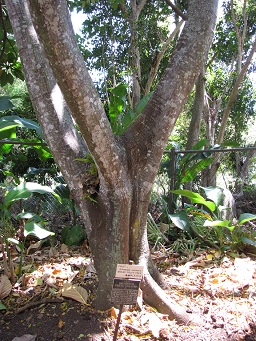 Fig. 40  S. malaccense trunk, Lao Tropical Gardens of Maui, Maui, Hawai'i  Fig. 41  S. malaccense trunk, Haiku, Maui, Hawai'i 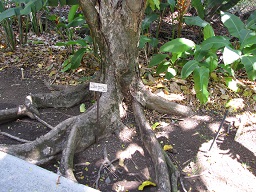 Fig. 42  S. malaccense roots, Lao Tropical Gardens of Maui, Maui, Hawai'i  Fig. 43  S. malaccense, Malay apple var. 'Pumarosa' 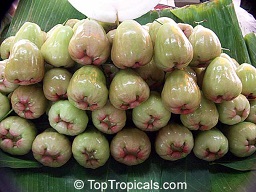 Fig. 44 S. malaccense, Malay apple var. 'Blanca' 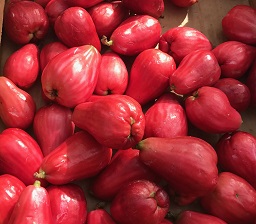 Fig. 45 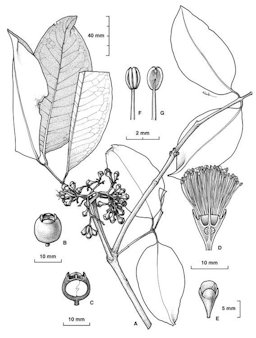 Fig. 46  |
Scientific
name Syzygium malaccense (L.) Merr. & L. M. Perry Common names Burmese: thabyo thabyang, thabyo thabyay; Chinese: hong hua pu tao, ma lai pu tao, ma liu jia pu tao, yang pu tao; Colombia: pomarosa de Malaca; English: Malacca apple, Malay apple, Malay rose apple, mountain apple, Otaheite cashew, Otaheite apple, rose apple, water apple; French: jambosier rouge, poire de Malacca, poire Malaque, pomme de Malaisie, pomme de Malai, pomme de Tahiti, pomme d’eau, pomme Malacca; German: Malacca-apfel, Malakka-apfel; Jamaica, British West Indies: Otaheite-apple; Japanese: maree futo momo; Khmer: chompuh kraham; Malay: darsana (Indonesia), jambu bar, jambu bol (Indonesia), jambu bubul, jambu kapal, jambu kling, jambu melaka, jambu merah, jambu tersana (Indonesia); Pilipino: mahopang-kalabau; Portuguese: jambo vermelho (Brazil), jambeiro; Russian: sitsigiui malakskii; Spanish: cajualito (Dominica Rep.), mazana de agua (Costa Rica), manzana de agua, manzana malaya, pera de agua (Venezuela), pomag (Venezuela), pomalaca, pomarosa de Malaca (Colombia), maranon japon (El Salvador), pomarrosa de Malaca, yambo; Tagalog: makopang kalabo, makopang kalabaw, tersana, yanba, yanbu; Thai: chom phuudaeng (chom phu daeng), chom phuu mamieo (chomphu-mamieow), chom ph saaraek (chom phu sa raek), chom phu-nanaek; Vietnamese: cay dao, cay roi, dieudo, man hurong tau 11 Synonyms Caryophyllus malaccensis (L.) Stokes; Eugenia domestica Baill., E. macrophylla Lam., E. malaccensis L., E. pseudomalaccensis Linden, E. purpurascens Baill., E. purpurea Roxb., Jambosa domestica DC., J. laevis Montrouz., J. macrophylla (Lam.) DC., J. malaccensis (L.) DC., J. purpurascens DC., J. purpurea (Roxb.) Wight & Arn., Myrtus macrophylla (Lam.) Spreng., M. malaccensis (L.) Spreng., Syzygium laeve (Montrouz.) Govaerts 1 Relatives Bell or water apple (S. aqueum), rose apple (S. jambos), wax jambu (S. samarangense) 6 Family Myrtaceae (myrtle family) Origin Bismarck Archipelago, Cambodia, Laos, Malaya, Myanmar, New Guinea, Queensland, Solomon Is., Thailand, Vanuatu, Vietnam 1 USDA hardiness zones Strictly tropical Uses Fruit; shade; medicinal properties; ornamental 6 Height 15-60 ft (4.6-18.3 m) Crown Dense conical or columnar crown of dark green foliage; broadly ovoid canopy 2,3 Plant habit Small to medium-sized tree; erect stem 2 Growth rate Moderate, 2-3 ft/yr (0.6-1 m/yr) for the first few years 6 Longevity Longevity is unknown, although several decades is expected 6 Trunk/bark/branches Thick trunk divides into large crooked branches; bark is grey and almost corky 8 Pruning requirement Required for ease of harvest Leaves Evergreen; opposite; large; oblong; dark green; leathery; short-stalked; long-pointed at apex and short-pointed at base 2 Flowers Purplish-red or rosepurple; clustered together along twigs back of leaves and hidden in crown 2 Fruit Berry; pear-shaped; 4 sepals at apex; white, crisp juicy flesh with applelike flavor; as with all the Jambu fruits there is a central hollow 2,8 Season Two crops annually, one in the fall or winter and another in the spring 9 Light requirement Full sun to partial shade 6 Soil tolerances Prefers a rich, well-drained soil pH preference 5.5-6.5, tolerating 5-8 4 Drought tolerance Does not do well in areas with a seasonal drought, unless irrigated during the dry season or grown near a water body 6 Waterlogging Does not tolerate waterlogging 6 Aerosol salt tolerance It is not known to be tolerant of salt spray 6 Cold tolerance Not tolerant of frost 5 Plant spacing 20-33 ft (6-10 m) for commercial planting 6 Roots Not reported as a problem Invasive potential * None reported Pest resistance Not known as a host for pests 6 Known hazard None Reading Material Manzana malaya, Malay-apple, Common Trees of Puerto Rico and the Virgin Islands Syzygium malaccense, Agroforestree Database Syzygium malaccense (Malay apple), Species Profiles for Pacific Island Agroforestry pdf Malay Apple, Fruits of Warm Climates Origin It has been cultivated for so long that its origin is uncertain. However, it is native to somewhere in the Indo-Malayan region or Southeast Asia, probably originally in lowland rainforest. 6 In Hawaii, the Malay-apple was introduced during the early Polynesian migrations. 9 Description A delight to the eye in every respect, the Malay apple is much admired for the beauty of the tree, its flowers and its colorful, glistening fruits, without parallel in the family Myrtaceae. 7 The malay apple has exceptional ornamental value. The tree flowers abundantly as many as three times per year, filling the trunk and inner part of large branches with bright red or white, mildly fragrant flowers, which can be seen through openings in the canopy. Each flowering period lasts about 2 weeks, leaving the ground under the tree temporarily carpeted in red or white. 6
Fig. 7. S. malaccense habit, Hana Hwy, Maui, Hawai'i Fig. 8. 'Pomarroso' - Pero de agua (S. malaccense), Armenia, Colombia Fig. 9. Botanical specimen in the Naples Botanical Garden, Florida, USA Leaves Leaf blades are slightly curved upward on both sides of midrib, the lateral veins slightly sunken and connected near margins, the upper surface dark green or green and usually slightly shiny, and the lower surface dull light green. Scattered minute gland dots are visible with a lens when the blade is held toward the light. 2
Flowers Several to many odorless flowers are borne in clusters 4-5 inches across, almost stalkless on a short branched green lateral axis (cyme or panicle). The flower has a funnel-shaped, light purplish- green base (hypanthium) ¾ inch long and 7/16 inch wide at top, enclosing the ovary and extending as a broad tube 3/16 inch beyond. There are 4 broad, rounded, thickened, persistent sepals 1/8-3/16 inch long; 4 spreading, rounded, concave, purplish-red petals ½ inch long; the mass of stamens 1-11/4 inches long, purplish red with yellow dot anthers; and pistil composed of inferior 2-celled ovary and persistent purplish-red straight style about 1¼ inches long. As the stamens fall, the ground under the tree becomes a purplish-red carpet (Fig. 14,34 ).2 Inflorescences exclusively on defoliate twig-parts (Fig. 7). 3 There are definite flowering seasons, often two, sometimes three in a year, but the timing varies from year to year. There seems to be no regular growth rhythm for Malay apple. Apparently the trees are triggered in bloom (by wet weather following a dry period) more readily than water apple (S. aqueum) and wax jambu (S. samarangense) trees; at any rate, Malay apple usually has the most crops per year. 3
Fig. 19. S. malaccense (L.), Costa Rica Fig. 20,21. S. malaccense Fig. 22. S. malaccense white flowers and leaves, Wailua, Maui, Hawai'i Fig. 23. Mountain apple blossum, Molokai Hawai'i Fig. 24. S. malaccense white flower duff on ground, Wailua, Maui, Hawai'i Fruit The fruit, oblong, obovoid, or bell-shaped, 2 to 4 in. (5-10 cm) long, 1 to 3 in. (2.5-7.5 cm) wide at the apex, has thin, smooth, waxy skin, rose-red or crimson or sometimes white with streaks of red or pink, and white, crisp or spongy, juicy flesh of very mild, sweetish flavor. There may be a single oblate or nearly round seed or 2 hemispherical seeds, 5/8 to 3/4 in. (1.6-2 cm) in width, light-brown externally, green internally and somewhat meaty in texture (Fig. 2). The fruits of some trees are entirely seedless. 7 Malay apple ripen about 60 days after bloom. 3 It is non-climacteric (will not ripen further after it is picked).
Fig. 31. S. malaccense, Malay apple var. 'Blanca' Fig. 32. Pommerac, Trinidad Fig. 33. S. malaccense fruit, Maui County Fair Kahului, Maui, Hawai'i Fig. 34,35. S. malaccense, Malay apple, Venezuela, Caura Lodge Fig. 36. S. malaccense, white Varieties There are two color forms, red and white, both of which are grown in home gardens. Trees with large and especially sweet fruit are sometimes cloned by cutting or air-layering. 6 Two varieties that have been grown in Florida are the 'Kingston', and the Thai 'Mameau' with leaves that have reached sixteen inches in length. 9 'Kingston' was introduced into Florida from Jamaica, by William F. Whitman. 'Kingston' is one of the largest al all Malay apples, having produced fruit up to 6 inches long and weighing over a pound. Dark-red, juicy fruits of good quality. 10 A third variety, 'Rookman', long, medium-sized, very sweet fruit with a texture like that of a peach. Originated in Trinidad where it is grown commercially and sold in the markets. Introduced into Florida by Al Will. 10 Harvesting Florida-grown Malay apple trees have been observed to bear two crops annually, one in the fall or winter and another in the spring. 9 Propagation Propagation from seed is common. Seeds are sometimes abortive. Seeds lose their viability quickly and should be sown fresh from the fruit. Clonal propagation through air layers, cuttings or budding is not difficult. Air layering is commonly employed in South-East Asia. The modified Forkert method is recommended for budding. Seedlings of the same or other Syzygium species are used as rootstocks. In Java 'jambu klampok' or 'kopo' (S. pycnanthum Merr. & Perry, syn. Eugenia densiflora (Blume) Duthie) is recommended as rootstock because it is hardy and not attacked by termites. 3 Planting The tree grows vigorously on a range of soil types from sand to heavy clay. It tolerates moderately acid soil but in high pH soil it develops nutritional deficiencies that can be overcome with the occasional use of micronutrient sprays. It does not do well in highly alkaline situations. 6 Pruning Pruning can control the tree’s size, although heavy pruning can kill the tree. 6 Irrigation The species require a reliable water supply and are often planted along streams or ponds. 3 Fertilization Fertilization is recommended after the inflorescence has formed since new flushes compete for nutrients with the flower and fruit. Both fruit colour and firmness were improved after calcium amendment to the soil. 11 Food Uses The ripe fruit is eaten raw. The skin is thin and the flesh is crisp and white. The slightly sweet taste is refreshing and can be a crunchy addition to a mixed fruit salad. Although not suited for jams or jellies, the half-ripened fruit can be pickled. Pickled or preserved slices and sauces, very heavily spiced, are found in southeast Asia. Wine is made from the fruit in Puerto Rico. 6 In Indonesia, the flowers are eaten in salads or are preserved in sirup. Young leaves and shoots, before turning green, are consumed raw with rice or are cooked and eaten as greens. 7 Medicinal Properties ** Various parts of the tree are used in traditional medicine, and some have in fact been shown to possess antibiotic activity. In particular the bark, leaves and roots of Malay apple are used against different ailments in a number of countries, also outside Asia (e.g. Hawaii, Brazil). 3 Other Uses The wood is reddish, hard and grows to dimensions large enough for construction purposes. 3 Other Edible Sysygium Species: Rose Apple, S. jambos Java Plum, S. cumini Wax Jambu, S. samarangense General In Hawai‘i the wood was considered sacred and carved into religious images. 6 Further Reading Syzygium malaccense, PROSEA Foundation Malay Apple Botanical Art List of Growers and Vendors |
||||||||||||||||||||||||||||||||||||
| Bibliography 1 "Syzygium malaccense (L.) Merr. & L.M.Perry." Plants of the World Online, Facilitated by the Royal Botanic Gardens, POWO, (CC BY-NC-SA 3.0), www.plantsoftheworldonline.org/taxon/urn:lsid:ipni.org:names:601907-1. Accessed 10 June 2021. 2 Little, Elbert L,. and Frank H. Wadsworth. "Common trees of Puerto Rico and the Virgin Islands." Series: Agriculture handbook no. 249, United States. Dept. of Agriculture, July 1964, pp. 404-405, Biodiversity Heritage Library, doi.org/10.5962/bhl.title.4135. Accessed 22 Feb. 2019. 3 Orwa C., et al. "Syzygium malaccense (L.) Merr. & Perry." Agroforestree Database: a tree reference and selection guide, version 4.0, 2009. www.worldagroforestry.org/treedb2/speciesprofile.php?Spid=18099. Accessed 22 Feb. 2019. 4 "Syzygium malaccense." Ecocrop, ecocrop.fao.org/ecocrop/srv/en/cropView?id=1033. Accessed 20 Apr. 2019. 5 Martin, Franklin W., et al. "Syzygium malaccensis Merr. et Perry." Perennial Edible Fruits of the Tropics, United States Department of Agriculture, Agricultural Research Service, Agriculture Handbook no. 642, 1987. Accessed 20 Apr. 2019. 6 Whistler, and Craig Elevitch."Syzygium malaccense (Malay apple)." Species Profiles for Pacific Island Agroforestry, Traditional Tree Initiative, Permanent Agriculture Resources, www.traditionaltree.org/images/pdfs/Syzygium-Malayapple.pdf. Accessed 20 Apr. 2019. 7 Fruits of Warm Climates. Julia F. Morton, Miami, 1987. 8 Molesworth Allen, Betty. Common Malaysian Fruits, Longman, 1975. 9 Whitman, William F. Five Decades with Tropical Fruit, A Personal Journey. Stuart, Quisqualis Books in cooperation with Fairchild Tropical Garden, 2001. 10 Facciola. S. Cornucopia II A Source Book of Edible Plants. Vista, Kampong Publications, 1998. 11 The Encyclopedia of Fruit & Nuts. Edited by Jules Janick and Robert E. Paull, Cambridge, CABI, 2008. Photographs Fig. 1 "Syzygium malaccense, Malay Apple var. Pumarosa." Top Tropicals, toptropicals.com/pics/garden/05/fruit/6347.jpg. Accessed 21 Feb. 2019. Fig. 2 Justinisaacs. "A ripened Syzygium malaccense cut into half, showing the seed." Wikimedia Commons, 6 Apr. 2012, (CC BY-SA 3.0), commons.wikimedia.org/wiki/File:Pommerac.cut.jpg. Accessed 19 Feb. 2019. Fig. 3 Starr, Forest, and Kim. "Syzygium malaccense (Mountain apple), Leaves, Kula Ace Hardware and Nursery, Maui, Hawai'i." Starr Environmental, no. 070906-8576, Sept. 06, 2007,(CC BY 4.0), www.starrenvironmental.com/images/image/?q=24524020169. Accessed 21 Feb. 2019. Fig. 4 Starr, Forest, and Kim. "Syzygium malaccense (Mountain apple), Leaves, Pali o Waipio, Maui, Hawai'i." Starr Environmental, no. 121108-1113, Nov. 08, 2012, (CC BY 4.0), www.starrenvironmental.com/images/image/?q=25170444816. Accessed 21 Feb. 2019. Fig. 5 Aguilar, Reinaldo. "Syzygium malaccense (L.) Merr. & L.M. Perry." Vascular Plants of the Osa Peninsula, Costa Rica, Sept. 25, 2011, Flickr, (CC BY-NC-SA 2.0), www.flickr.com/photos/plantaspinunsulaosa/6183025607/. Accessed 19 Feb. 2019. Fig. 6 Aguilar, Reinaldo. "Syzygium malaccense (L.) Merr. & L.M. Perry." Vascular Plants of the Osa Peninsula, Costa Rica, Sept. 25, 2011, Flickr, (CC BY-NC-SA 2.0), www.flickr.com/photos/plantaspinunsulaosa/6183021575/. Accessed 19 Feb. 2019. Fig. 7 Starr, Forest, and Kim. "Syzygium malaccense (Mountain apple), Habit, Hana Hwy, Maui, Hawai'i." Starr Environmental, no. 050107-2812, Jan. 07, 2005, (CC BY 4.0), www.starrenvironmental.com/images/image/?q=24105668404. Accessed 21 Feb. 2019. Fig. 8 Tamayo, Alejandro Bayer. "Pomarroso - Pero de agua (Syzygium malaccense), Armenia, Colombia." Commons Wikimedia, 27 Mar. 2013, (CC BY-SA 2.0), commons.wikimedia.org/wiki/File:Pomarroso_-_Pero_de_agua_(Syzygium_malaccense)_(14222656627).jpg. Accessed 19 Feb. 2019. Fig. 9 Daderot. "Botanical specimen in the Naples Botanical Garden - Naples, Florida, USA." Commons Wikimedia, 18 Mar. 2017, (CC0), commons.wikimedia.org/wiki/File:Syzygium_malaccense_-_Naples_Botanical_Garden_-_Naples,_Florida_-_DSC09781.jpg. Accessed 19 Feb. 2019. Fig. 10 Aguilar, Reinaldo. "Syzygium malaccense (L.) Merr. & L.M. Perry." Vascular Plants of the Osa Peninsula, Costa Rica, Sept. 25, 2011, Flickr, (CC BY-NC-SA 2.0), www.flickr.com/photos/plantaspinunsulaosa/6183029725/. Accessed 19 Feb. 2019. Fig. 11 Aguilar, Reinaldo. "Syzygium malaccense (L.) Merr. & L.M. Perry." Vascular Plants of the Osa Peninsula, Costa Rica, Sept. 25, 2011, Flickr, (CC BY-NC-SA 2.0), www.flickr.com/photos/plantaspinunsulaosa/6183547998/. Accessed 19 Feb. 2019. Fig. 12 Aguilar, Reinaldo. "Syzygium malaccense (L.) Merr. & L.M. Perry." Vascular Plants of the Osa Peninsula, Costa Rica,Sept. 25, 2011, Flickr, (CC BY-NC-SA 2.0), www.flickr.com/photos/plantaspinunsulaosa/6183544784/. Accessed 19 Feb. 2019. Fig. 13 Starr, Forest, and Kim. "Syzygium malaccense (Mountain apple), Flower buds at Nahiku, Maui, Hawai'i." Starr Environmental, no. 090623-1407, June 23, 2009, (CC BY 4.0), www.starrenvironmental.com/images/image/?q=24966444155. Accessed 21 Feb. 2019. Fig. 14 Mercadante, Mauricio. "Syzygium malaccense (L.) Merr. & L.M. Perry, Asa Norte, Brasília, Brasil." Flickr, Apr. 2014, (CC BY-NC-SA 2.0), www.flickr.com/photos/mercadanteweb/13682225654/. Accessed 19 Feb. 2019. Fig. 15 Aguilar, Reinaldo. "Syzygium malaccense (L.) Merr. & L.M. Perry." Vascular Plants of the Osa Peninsula, Costa Rica, Sept. 25, 2011, Flickr, (CC BY-NC-SA 2.0), www.flickr.com/photos/plantaspinunsulaosa/6183601532/. Accessed 19 Feb. 2019. Fig. 16 "Syzygium malaccense (L.) Merr. & L.M. Perry, Soledad, California." National Museum of Natural History, Botany Dept., Smithsonian, www.si.edu/object/nmnhbotany_10327108. Accessed 22 Feb. 2019. Fig. 17 Starr, Forest, and Kim. "Syzygium malaccense (Mountain apple), White flowers, Haiku, Maui, Hawai'i." Starr Environmental, no. 090610-0445, June 10, 2009, (CC BY 4.0), www.starrenvironmental.com/images/image/?q=24870219061. Accessed 21 Feb. 2019. Fig. 18 Mercadante, Mauricio. "Syzygium malaccense (L.) Merr. & L.M. Perry, Asa Norte, Brasília, Brasil." Flickr, Apr. 2014, (CC BY-NC-SA 2.0), www.flickr.com/photos/mercadanteweb/13682229854/. Accessed 19 Feb. 2019. Fig. 19 Aguilar, Reinaldo. "Syzygium malaccense (L.) Merr. & L.M. Perry." Vascular Plants of the Osa Peninsula, Costa Rica, Sept. 25, 2011, Flickr, (CC BY-NC-SA 2.0), www.flickr.com/photos/plantaspinunsulaosa/6183078789/. Accessed 19 Feb. 2019. Fig. 20 "Syzygium malaccense (L.) Merr. & L.M. Perry." 1 Jun 2013, National Museum of Natural History, Botany Dept., Smithsonian, www.si.edu/object/nmnhbotany_10282810. Accessed 20 Apr. 2019. Fig. 21 Manoj K. "Syzygium Malaccense." Wikimedia Commons, 26 Nov. 2012, (CC BY-SA 3.0), commons.wikimedia.org/wiki/File:Syzygium_Malaccense_(20284213).jpeg Fig. 22 Starr, Forest, and Kim. "Syzygium malaccense (Mountain apple), White flowers and leaves, Wailua, Maui, Hawai'i." Starr Environmental, June 18, 2009, no. 090618-1245, (CC BY 4.0), www.starrenvironmental.com/images/image/?q=24670541900. Accessed 21 Feb. 2019. Fig. 23 Grogloth, Carole. "Mountain Apple Blossum, Molokai Hawai'i." Wikimedia Commons, via Panoramio, 2 Mar. 2013, Wikimedia Commons, (CC BY 3.0), commons.wikimedia.org/wiki/Category:Close-ups_of_Syzygium_malaccense_flowers#/media/File:Mountain_Apple_Blossum_-_Carole_ Grogloth_Molokai_Hawaii_-_panoramio.jpg. Accessed 23 Apr. 2019. Fig. 24 Starr, Forest, and Kim. "Syzygium malaccense (Mountain apple), White flower duff on ground, Wailua, Maui, Hawai'i." Starr Environmental, no. 090618-1244, June 18, 2009, (CC BY 4.0), www.starrenvironmental.com/images/image/?q=24872712341. Accessed 21 Feb. 2019. Fig. 25 Cerlin Ng. "Syzygium malaccense." Flickr, July 16, 2014, (CC BY-NC-SA 2.0), www.flickr.com/photos/89906643@N06/14840988625/. Accessed 21 Feb. 2019. Fig. 26 Starr, Forest, and Kim. "Syzygium malaccense (Mountain apple), Fruit, Hana Hwy, Maui, Hawai'i." Starr Environmental, no. 070321-6134, Mar. 21, 2007, (CC BY 4.0), www.starrenvironmental.com/images/image/?q=24590382420. Accessed 21 Feb. 2019. Fig. 27 Justinisaacs. "The Fruits in full season in Trinidad and tobago." Wikimedia Commons, 5 Apr. 2012, (CC BY-SA 3.0), commons.wikimedia.org/wiki/File:Pommerac01.JPG. Accessed 20 Apr. 2019. Fig. 28 Starr, Forest, and Kim. "Syzygium malaccense (Mountain apple), Fruit and leaves, Hana Hwy, Maui, Hawai'i." Starr Environmental, no. 070321-6136, Mar. 21, 2007, (CC BY 4.0), www.starrenvironmental.com/images/image/?q=24590386490. Accessed 21 Feb. 2019. Fig. 29 Jaitt, Oscar. "Heavy Fruiting White Malay Apple." Tropical Fruit Forum, July 31, 2013, www.fruitlovers.com/tropicalfruitforum.com/index.php?action=profile;u=60;area=showposts;sa=topics;start=125. Accessed 23 Apr. 2019. Fig. 30 Jaitt, Oscar. "Three types of Malay Apple." Tropical Fruit Forum, July 14, 2013, www.fruitlovers.com/tropicalfruitforum.com/index.php?action=profile;u=60;area=showposts;sa=topics;start=200. Accessed 23 Apr. 2019. Fig. 31 Khaytarova, Marina. "Syzygium malaccense, Malay Apple var. Pumarosa." Top Tropicals, toptropicals.com/pics/garden/m1/Podarki_11/Syzygium_malaccense10MKh.jpg. Accessed 21 Feb. 2019. Fig. 32 Justinisaacs. "Pommerac-trinidad." Wikimedia Commons, 5 Apr. 2012, (CC BY-SA 3.0), commons.wikimedia.org/wiki/File:Pommerac_trinidad.jpg. Accessed 20 Apr. 2019. Fig. 33 yakovlev.alexey. "Syzygium malaccense (Myrtaceae) – Malay apple, Venezuela, Caura Lodge." Wikimedia Commons, 7 Jan. 2011, (CC BY-SA 2.0), commons.wikimedia.org/wiki/File:Syzygium_malaccense_(Myrtaceae)_–_Malay_apple_(31749678914).jpg. Accessed 19 Feb. 2019. Fig. 34 yakovlev.alexey. "Syzygium malaccense (Myrtaceae) – Malay apple, Venezuela, Caura Lodge." Flickr, Jan. 7, 2011, (CC BY-SA 2.0), www.flickr.com/photos/botalex/32440662352/. Accessed 20 Apr. 2019. Fig. 35 "Syzygium malaccense (L.) Merr. & L.M. Perry, Soledad, California." National Museum of Natural History, Botany Dept., Smithsonian, www.si.edu/object/nmnhbotany_10278834. Accessed 22 Feb. 2019. Fig. 36 Starr, Forest, and Kim. "Syzygium malaccense (Mountain apple), Fruit, Maui County Fair Kahului, Maui, Hawai'i." Starr Environmental, no. 091003-7368, Oct. 03, 2009, (CC BY 4.0), www.starrenvironmental.com/images/image/?q=24687710350. Accessed 21 Feb. 2019. Fig. 37 Starr, Forest, and Kim. "Syzygium malaccense (Mountain apple), Habit, Maui Nui Botanical Garden, Maui, Hawai'i." Starr Environmental, no. 040318-0070, Mar. 18, 2004, (CC BY 4.0), www.starrenvironmental.com/images/image/?q=24072802883. Accessed 21 Feb. 2019. Fig. 38 Starr, Forest, and Kim. "Syzygium malaccense (Mountain apple), Flowering habit, Haiku, Maui, Hawai'i." Starr Environmental, no. 090609-0344, June 09, 2009, (CC BY 4.0), www.starrenvironmental.com/images/image/?q=24667679620. Accessed 21 Feb. 2019. Fig. 39 Mercadante, Mauricio. "Syzygium malaccense (L.) Merr. & L.M. Perry, Asa Norte, Brasília, Brasil." Flickr, Apr. 2014, (CC BY-NC-SA 2.0), www.flickr.com/photos/mercadanteweb/13681911103/. Accessed 19 Feb. 2019. Fig. 40 Starr, Forest, and Kim. "Syzygium malaccense (Mountain apple), Trunk, Iao Tropical Gardens of Maui, Maui, Hawaii." Starr Environmental, no. 120522-6049, May 22, 2012, (CC BY 4.0), www.starrenvironmental.com/images/image/?q=24512390954. Accessed 21 Feb. 2019. Fig. 41 Starr, Forest, and Kim. "Syzygium malaccense (Mountain apple), Trunk, Haiku, Maui, Hawai'i." Starr Environmental, no. 090610-0446, June 10, 2009, (CC BY 4.0), www.starrenvironmental.com/images/image/?q=24595919049. Accessed 21 Feb. 2019. Fig. 42 Starr, Forest, and Kim. "Syzygium malaccense (Mountain apple), Roots, Iao Tropical Gardens of Maui, Maui, Hawai'i." Starr Environmental, no. 120522-6048, May 22, 2012, (CC BY 4.0), www.starrenvironmental.com/images/image/?q=25024817922. Accessed 21 Feb. 2019. Fig. 43 "Syzygium malaccense, Malay Apple var. Blanca." Top Tropicals, toptropicals.com/pics/garden/05/fruit/6348.jpg. Accessed 21 Feb. 2019. Fig. 44 "Syzygium malaccense, Malay Apple var. Blanca." Top Tropicals, toptropicals.com/pics/garden/05/fruit/6332.jpg. Accessed 21 Feb. 2019. Fig. 45 "Malay Apple." Trade Winds Fruit, www.tradewindsfruit.com/content/malay-apple.htm. Accessed 21 Feb. 2019. Fig. 46 Fern, Ken. "Syzygium malaccense (L.) Merr. & L.M.Perry." Australian National Botanic Gardens, Last update 13 June 2019, Tropical Plants Database, (CC BY-NC-SA 3.0), tropical.theferns.info/viewtropical.php?id=Syzygium+malaccense. Accessed 11 June 2021. * UF/IFAS Assessment of Non-native Plants in Florida's Natural Areas ** Information provided is not intended to be used as a guide for treatment of medical conditions. Published 23 Apr. 2019 LR. Last update 21 June 2021 LR |
|||||||||||||||||||||||||||||||||||||



